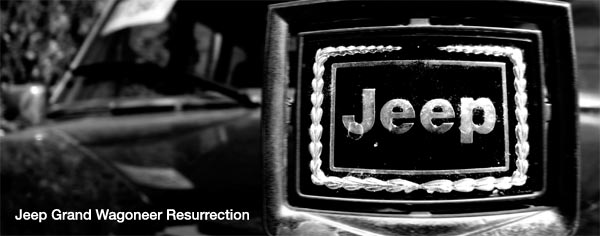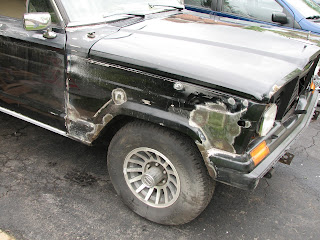I grabbed at one of those freebie weekends that students get once uni. lets out for the summer, and before they're into summer jobs. Since the job hunting was a little slow, and no one was going to contact me on the weekend anyways, I picked up the cut off wheels, pulled the beast onto the driveway, and began mapping my patchwork with a sharpie.
Sit-rep; there were a good number of rusted out areas, in places that would continue to rust and pucker out any subsequent bondo work. Seeing as I didnt want to make this a rolling Bondo ad, I had already decided the best fix was to cut and remove the badness, and replace it with new 18 gauge steel.
All in all, I think I decided on cutting out 8 of the worst (or most accessible) areas. Some were small (a few sq inches), and some were rather huge, as you'll see.
I wish I knew a little more about welding surface tension before welding in these patches. The tension up front there warped the panel a bit, but I managed to coax it back into place with some light body hammer tapping and a steel dolly.
My largest, most complex patch yet, which encompasses 2 angular body lines, and a sweeping curve, as well as a "cross curve" lip to follow the old fender lip line. Tricky. I decided the best way to tackle it would be to do it in 3 stages, through each of the 3 "stepped" areas.
Step 1 encompassed the first angled body line and fender lip.
Step 2 covered the 2nd patch area, leaving the largest and most complicated for last.
All in all, I was pretty pleased. There is a bit of a recess where patch 2 and 3 meet, along the fender line, but I can probably just bondo that in.
I also patched the top of the latter fender, and the rear of the opposing side.
This patch; I probably could have cut more out of. some rust treatment though should halt any remaining orange avenger.
All in all, I cut back the body filler required to make these areas look better again. It should be noted that I do not intend to make this a show quality vehicle. Although I will surely put painstaking time into doing the bondo right (as an Industrial designer, you learn to do a lot of bondo work on models), I intend this vehicle to be used as it was intended; as a Jeep. I'm painting it with Tremclad, because as I know, "it's bound to happen again."



















